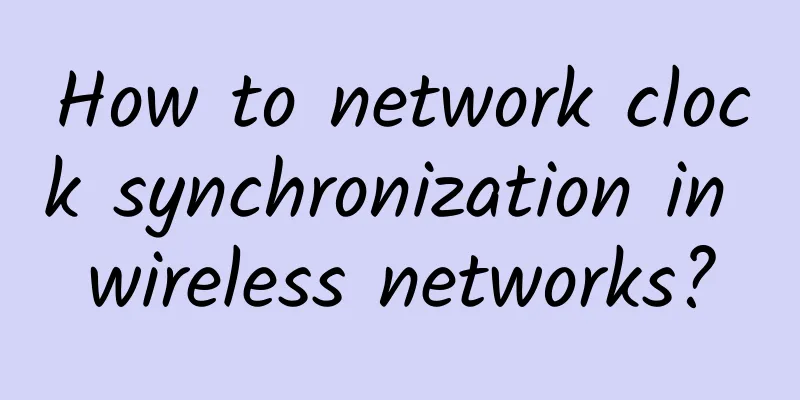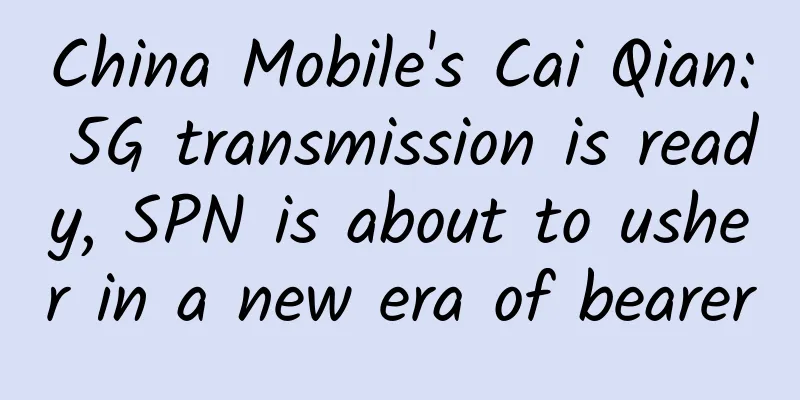Build telecom-grade WiFi and lay out the entrance to the wireless city?

|
As early as 2013, the WiFi networks of the three major operators in my country generally had the problem of "hot installation and cold use". Users chose to access WiFi networks in order to obtain faster network speeds. However, the reality was contrary to their wishes. Because the WiFi networks of my country's operators had problems such as "unstable signals", "slow network speeds" and "complicated authentication processes" that seriously affected the user experience, users' enthusiasm for using WiFi was greatly dampened. With the rapid development of commercial WiFi in the past three years, the demand for the Internet among netizens has increased day by day, and WiFi-based applications have emerged in an endless stream. The WiFi experience has also become better and better, especially with the increasing number of government-led WiFi wireless city constructions. The trend shows that WiFi is increasingly becoming the entrance to wireless cities! Many challenges Experts say that after users access WiFi, they may find that the speed is very slow or not available at all. On the one hand, this is because WiFi itself has certain technical bottlenecks, such as public frequency band interference, limited single-point coverage, limited number of single-point access users, and poor roaming support. On the other hand, it is also closely related to site selection, deployment, and optimization during actual deployment. Currently, most terminals prefer to access WiFi, but the operator network has a weak control strategy for terminal WiFi, which exacerbates the poor user experience. The proportion of ultra-idle devices in the operator's WiFi network is higher than 40%, which means that more skills are needed in the site selection and deployment of WiFi networks. WiFi works on the unlicensed open frequency bands of 2.4GHz and 5GHz. Therefore, interference has become a major problem affecting the WiFi user experience. On the one hand, Bluetooth, microwave ovens, medical equipment, etc. also work on the same frequency band, which will cause interference between them; on the other hand, taking 2.4GHz as an example, although there can be as many as 14 central frequency points, there are only 3 available channels that can be continuously networked without overlapping. In this way, the WiFi deployment of multiple operators in one area will inevitably face the problem of co-frequency or repeated frequency interference. To this end, WiFi2.0 technology based on multi-channel intelligent management will achieve an improvement in user experience by optimizing channels. Gradually realize unified authentication of high-quality networks Of course, the user experience of WiFi not only requires a certain scale of hotspot coverage, but is also closely related to the authentication method. In the WiFi field, Portal authentication is usually used, and users are required to enter their username and password during authentication. The advantage of Portal is that it is applicable to almost all terminals, but its disadvantages are also obvious: the authentication process is cumbersome, especially in areas with poor network coverage, where frequent repeated authentication is required, which seriously affects the user experience. In particular, Portal authentication is a low-security authentication method that is difficult to prevent the emergence of phishing APs, which will lead to the leakage or theft of personal information. Therefore, I hope that the majority of companies can work together to formulate unified standards and promote the rapid development of the industry. Build a nest to attract phoenixes and let scenario applications promote ecological development As a network coverage method, WiFi has been widely recognized in the Internet of Things and near-field communication. However, if it is only provided as a network, it is inevitable to follow the path of the three major operators. The key is to combine the attributes of merchants and launch corresponding applications and services. At present, several major domestic WiFi operators are already exploring, for example, in hotels, buses, scenic spots and other scenarios, promoting corresponding convenient services for the people and data analysis services for managers to help them improve their production efficiency or save costs. I believe this is the trend of the future and our biggest blue ocean. Building a big data cloud platform Wireless city projects, including public WiFi networks, provide one-stop boutique WiFi coverage solutions for various typical scenarios such as business districts, scenic spots, hospitals, schools, banks, 4S stores, convention and exhibition centers, stadiums, transportation hubs, airports, railway stations, etc., including: wireless network equipment, security audit equipment, Portal authentication system, map and positioning system, content caching system, Internet access bandwidth, etc. In addition to providing many conveniences and city management functions, WiFi has also created a new big data platform, so the demand for WiFi big data cloud platform came into being. We found that with the construction of wireless cities, more and more governments are based on providing public services and need to shape the image of an open, integrated, efficient, transparent, green and secure service-oriented smart government, which also covers all aspects including three-dimensional security planning, government cloud platform construction, and government collaborative office. In the entire new IT construction, it is particularly important to take the government cloud platform as the core basic center to support the underlying data access and transmission, the upper-level business interconnection and the data processing of the business platform, and to create a platform for diversified application resources and security guidelines for smart government affairs. The best case from GB Huanchuang is that Huanchuang undertook the construction of the Smart Haidian Government Cloud Platform. With the practical concept of serving the government, Huanchuang's government cloud platform adopted a cloud service application model, directly renting cloud resources from cloud service providers to deploy government business applications. In this way, traditional government agencies no longer need to pay attention to the construction of infrastructure software and hardware platforms, and truly achieved the simple goal of an efficient and open smart government. Through modular and layered design, the Huanchuang Cloud Platform ensures high reliability and easy scalability while achieving fully automated delivery of computing, network, storage, security and other service resources in the infrastructure. Smart city is a systematic project. Under the guidance of the government's top-down and orderly advancement, WiFi is based on better network planning and optimized development concepts. I believe that building a telecommunications-level portal will be a natural process. |
<<: Multiple Choices for Internet Communication: Do you really know how to make phone calls?
>>: Just one click to start your journey into Huawei's ICT virtual exhibition car
Recommend
5G architecture innovation is obvious and the bearer network should fully support it
5G will become one of the hot technologies in the...
Long-term validity! Tencent Cloud Server Flash Sale starts at 88 yuan per year, Hong Kong 1C2G1M starts at 299 yuan per year
Tencent Cloud's 10th anniversary thanksgiving...
If all operators become Yang Bailao, what will they use to build 5G?
At the IT Summit held in Shenzhen, someone finall...
Wangsu Technology launches edge AI gateway to help developers build AI
On July 11, Wangsu Technology announced the launc...
Operators must solve ten problems before they have a chance to defeat WeChat
WeChat's powerful social functions have repla...
The difference between SMTP and IMAP in email protocols
Author: Li Jiabin, Unit: China Mobile Smart Home ...
How to choose NB-IoT, Cat.1, and Cat.M for IoT device communication?
1. What is NB-IoT NB-IoT (Narrow Band Internet of...
How to improve Wi-Fi performance: Experts talk planning, troubleshooting
Wireless is the technology of choice and the defa...
Twelve questions about Internet knowledge, do you know?
[[379905]] Preface Countdown to Chinese New Year~...
Five-minute technical talk | Understand how computers send and receive information in one article
Part 01 Physical Layer If a computer wants to tra...
Performance Tuning: The RocketMQ timeout exception that has troubled me for half a year has finally been solved
[[398458]] In the intranet environment, there was...
Huawei wins "2018 GSMA Mobile Industry Outstanding Contribution Award"
At a special ceremony held last night, GSMA prese...
A review of SDWAN's martial arts schools in 2018
There is no shortage of newcomers in the network ...
5G promotes the development of industrial Internet, and we need to pay attention to these two points in the future
The Industrial Internet is the key cornerstone an...
One article to understand SAN network composition and daily operation and maintenance
[[268180]] 1. What is SAN network? Baidu Encyclop...









